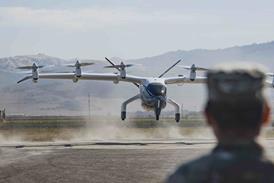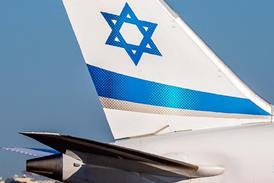Andrew Doyle/LONDON
SULZER METCO has developed a rapid solution to a potentially serious problem, which has already caused delays in flight-testing the Eurofighter EF2000.
British Aerospace (Military Aircraft division), asked the UK-based Sulzer company, to specify a suitable thermal-protection coating for the prototype aircraft DA2's aft V-bay tunnel skin-panels, after exhaust-plume damage from the aircraft's Turbo-Union RB199 engines had been discovered. "In the reheat state, the plume from one of the engines overheated part of the rear fuselage," says BAe, adding that: "It was not a dangerous situation."
BAe required the coating to be applied within seven days, in an effort to minimise disruption to the flight test programme.
Sulzer Metco specified a bond coat, consisting of an alloy of cobalt, nickel chrome, aluminum and yttria, and a top- coat of zirconium oxide and yttrium oxide. The metals come in powder form, and are applied using a plasma-spray system with a robotic high-speed scanning unit.
Plasma spraying consists of heating or melting fine particles of metals, ceramics, carbides or alloys and projecting them at high velocity on to a prepared surface. High-speed scanning is used to ensure a uniform surface, by mounting the spray gun on a robotic arm, which is programmed to scan the panel area repeatedly.
The damaged panels were removed from the Warton-based aircraft and the coatings applied overnight, allowing the components to be re-fitted to the aircraft the next day. The aircraft has since had 15 flights with no detrimental effects to the plasma coating.
The first two prototype Eurofighter EF2000s, are fitted with RB199s, which are 3.6m long. Production aircraft will be fitted with longer (4m) Eurojet EJ200 power plants, which consequently have exhaust nozzles further away from the rear fuselage.
Source: Flight International




















